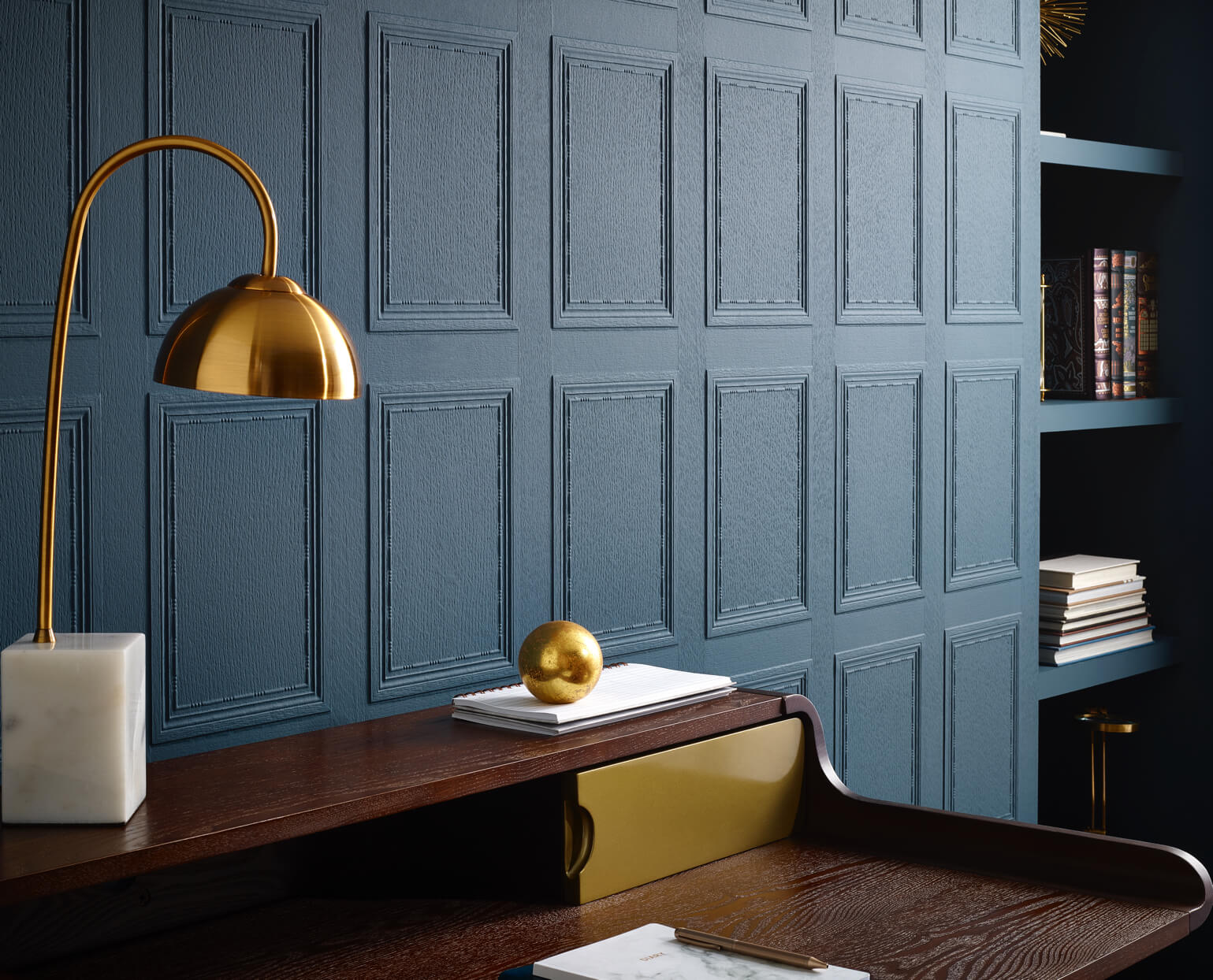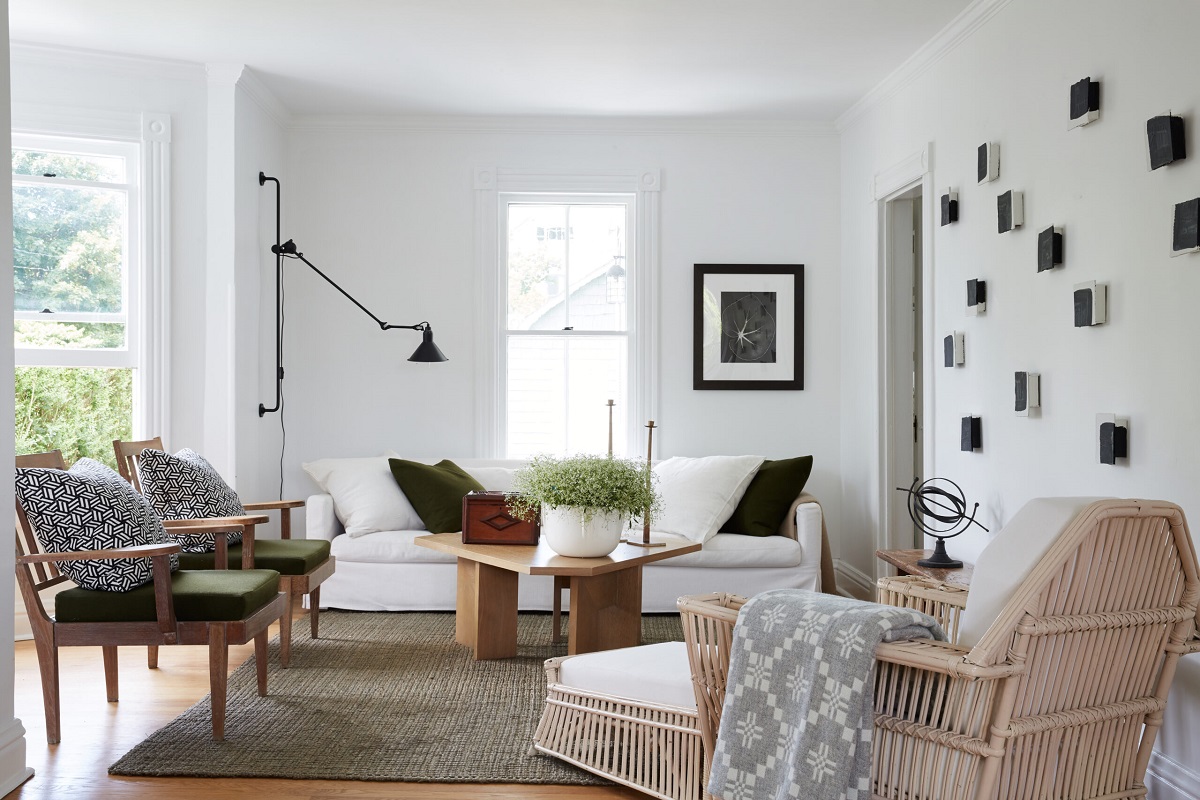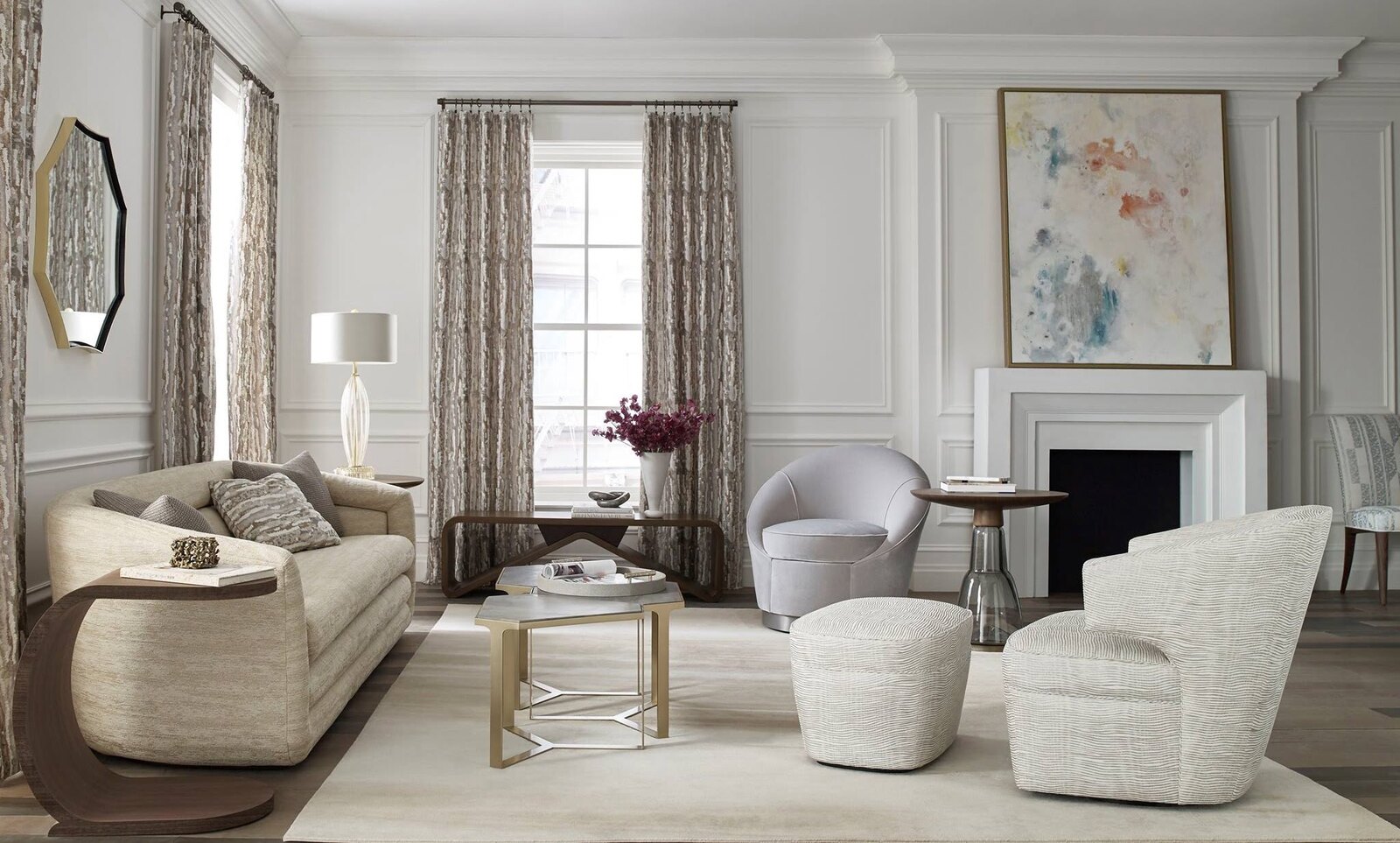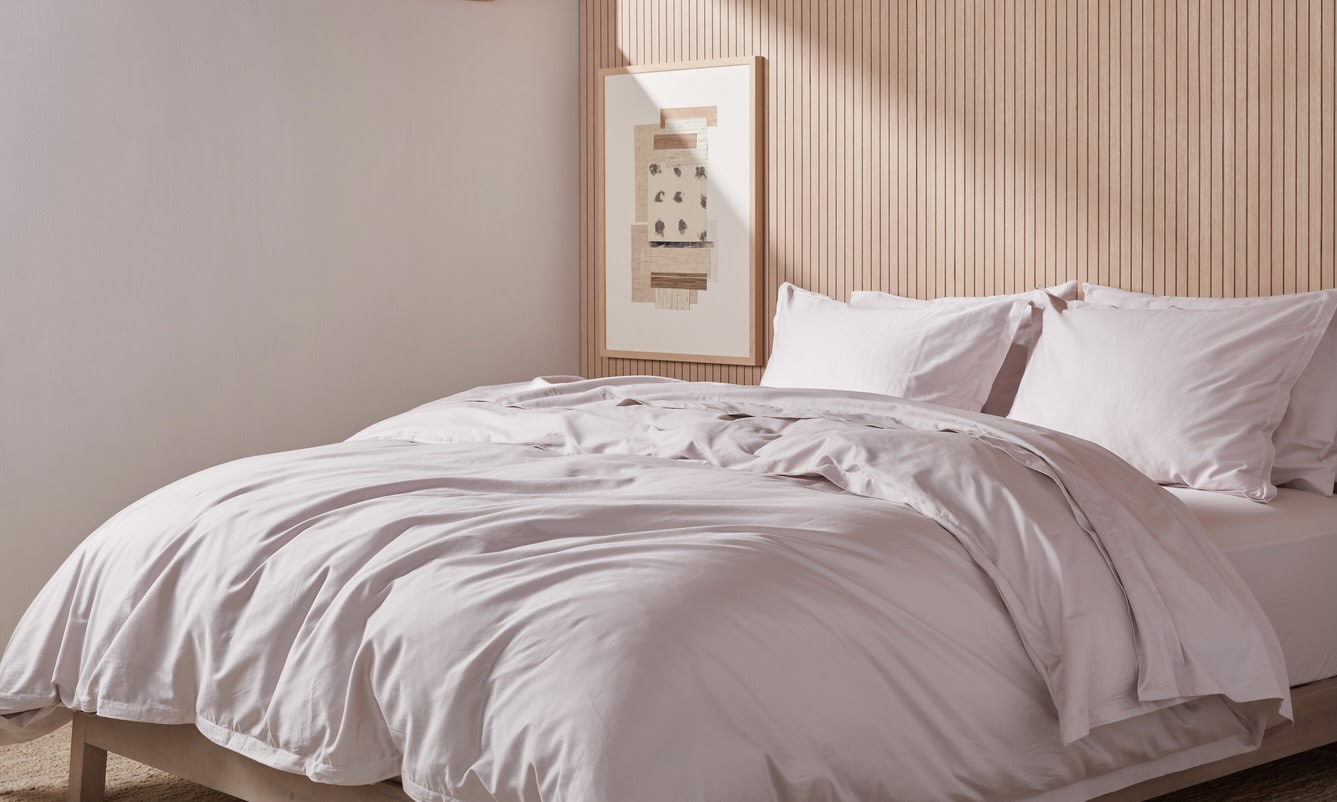Home>Interior Design>Style Icons: Rubelli
Interior Design
Style Icons: Rubelli
Modified: August 30, 2024
Discover the timeless elegance of interior design with Rubelli, the ultimate style icons. Explore their exquisite collection of fabrics, wallpapers, and furnishings to create a luxurious ambiance in your space.
(Many of the links in this article redirect to a specific reviewed product. Your purchase of these products through affiliate links helps to generate commission for Storables.com, at no extra cost. Learn more)
Introduction
Rubelli is a name that has become synonymous with luxury and elegance in the world of interior design. With a history spanning over centuries, Rubelli has established itself as one of the most prestigious and influential brands in the industry.
Founded in Venice, Italy, in 1858, Rubelli began as a small textile company and has since grown into a global powerhouse. Known for its exquisite fabrics and meticulous craftsmanship, Rubelli has furnished the interiors of some of the world’s most prestigious buildings, including palaces, hotels, and yachts.
What sets Rubelli apart is its unwavering commitment to quality and innovation. The company not only preserves traditional weaving techniques but also continuously pushes boundaries by experimenting with new materials and designs. This unique combination of heritage and innovation has propelled Rubelli to be at the forefront of interior design trends.
Over the years, Rubelli has collaborated with renowned designers, architects, and artists to create iconic collections that showcase the brand’s exquisite craftsmanship and attention to detail. These collaborations have resulted in an extensive portfolio of fabrics, wallpapers, and furniture that embody timeless elegance and sophistication.
The influence of Rubelli extends far beyond the world of interior design. Its fabrics and patterns have inspired fashion designers, who have incorporated Rubelli textiles into their collections, giving rise to a seamless integration between fashion and interiors. Rubelli’s creations have adorned the runways of top fashion houses, bringing a touch of luxury to the world of haute couture.
With a rich history and a commitment to excellence, Rubelli continues to be a driving force in the world of interior design. Its impeccable craftsmanship, attention to detail, and dedication to preserving traditional techniques have made Rubelli a coveted brand among design enthusiasts and industry professionals.
In this article, we will delve into the early history of Rubelli, its expansion and innovation, its collaborations with designers, and the influence it has had on both fashion and interior design. We will also explore the lasting legacy and impact of Rubelli in the industry, as well as why it remains a symbol of luxury and sophistication.
Key Takeaways:
- Rubelli: A Timeless Legacy of Craftsmanship and Innovation
Rubelli’s rich history, commitment to traditional weaving techniques, and collaborations with renowned designers have solidified its position as a style icon in the world of interior design. The brand’s influence extends beyond interiors, inspiring fashion trends and setting new standards for luxury and sophistication. - Bridging Fashion and Interiors: Rubelli’s Enduring Impact
Rubelli’s seamless integration of traditional craftsmanship with contemporary aesthetics has not only influenced interior design trends but also left a lasting mark on the fashion industry. The brand’s commitment to sustainability and ethical practices further cements its influence, inspiring creativity and setting new standards for luxury and sophistication.
Early History
The story of Rubelli begins in Venice, Italy, in 1858. The company was founded by Lorenzo Rubelli, who had a passion for textiles and a vision to create exquisite fabrics that would stand the test of time. From its humble beginnings, Rubelli quickly garnered a reputation for its exceptional craftsmanship and attention to detail.
In the early years, Rubelli focused on producing traditional Venetian velvets, which were highly sought after for their luxurious texture and vibrant colors. The velvets were hand-woven using centuries-old techniques, with intricate patterns and designs that reflected the rich cultural heritage of Venice.
As the demand for Rubelli’s fabrics grew, the company expanded its operations and began to experiment with new materials and weaving techniques. This marked the beginning of Rubelli’s journey towards becoming a global leader in the textile industry.
During the late 19th and early 20th centuries, Rubelli’s fabrics became a staple in the interiors of Venetian palaces and prestigious buildings. The company’s meticulous craftsmanship and attention to detail made its textiles highly coveted among the elite. Rubelli’s reputation for excellence propelled the brand to international fame and attracted clients from around the world.
In the midst of economic and social changes in the early 20th century, Rubelli faced challenges that threatened its survival. However, the company adapted to the changing times by embracing modernization while still holding onto its traditional roots. Rubelli’s ability to blend heritage and innovation would become a defining characteristic of the brand in the years to come.
Throughout its history, Rubelli has remained a family-owned business, with each generation contributing their expertise and passion to the company. This familial approach has allowed Rubelli to maintain a strong sense of identity and craftsmanship that is reflected in every product they create.
Today, Rubelli continues to be headquartered in Venice, where it operates its main weaving mill and showroom. The mill is a testament to the brand’s commitment to preserving traditional weaving techniques, with artisans who have honed their skills over generations. Rubelli’s fabrics are still painstakingly hand-woven, ensuring the highest level of quality and attention to detail.
The early history of Rubelli laid the foundation for what would become a renowned and influential brand in the world of interior design. From its origins in Venice to its international acclaim, Rubelli’s commitment to craftsmanship and innovation has propelled it to the forefront of the industry and solidified its position as a style icon.
Expansion and Innovation
With a strong foundation in traditional Venetian craftsmanship, Rubelli embarked on a journey of expansion and innovation that would propel the brand to new heights. The company’s commitment to quality and constant pursuit of excellence led to breakthroughs and advancements that set Rubelli apart from its competitors.
During the mid-20th century, Rubelli expanded its production capabilities and introduced modern machinery to its weaving mill. This allowed the company to increase its production capacity without compromising on the meticulous attention to detail that had become synonymous with Rubelli’s fabrics.
As Rubelli embraced modernization, it also explored new materials and techniques. The brand began to experiment with different types of fibers, including silk, wool, and linen, expanding its range and offering a diverse selection of fabrics to suit various design styles and preferences.
In the 1960s, Rubelli introduced a groundbreaking innovation – the incorporation of metallic threads in its fabrics. This bold move revolutionized the industry and put Rubelli at the forefront of textile design. The metallic threads added a luminous and glamorous touch to the textiles, creating a visual impact that captured the attention of designers and clients alike.
Rubelli’s commitment to innovation extended beyond materials and techniques. The brand also explored new design concepts and patterns, collaborating with talented artists and designers to create collections that pushed the boundaries of traditional textile design.
One notable collaboration was with renowned artist and textile designer Cipe Pineles. Together, they created a collection of fabrics inspired by the organic forms and vibrant colors found in nature. This collaboration marked a departure from Rubelli’s traditional aesthetic and brought a fresh and contemporary approach to the brand’s offerings.
Another significant partnership was with Italian architect and designer Piero Lissoni. Lissoni’s minimalist and sleek design sensibilities were infused with Rubelli’s timeless elegance, resulting in a collection of fabrics and furniture that exuded a sense of modern luxury.
As Rubelli continued to expand its product range, the brand also ventured into the world of wallpapers. Drawing on its expertise in textiles, Rubelli created a line of wallpapers that reflected the same level of craftsmanship and attention to detail as its fabrics. The wallpapers featured intricate patterns and designs that brought a touch of sophistication to interior spaces.
In recent years, Rubelli has embraced digital technologies to enhance its design and production processes. The company leverages computer-aided design (CAD) software to create intricate patterns and simulate color combinations, allowing for greater precision and efficiency in the design process.
Expanding its reach beyond fabrics and wallpapers, Rubelli also ventured into the realm of furniture design. Collaborating with renowned designers, the brand created a collection of furniture pieces that perfectly complemented its textiles, providing a complete and cohesive design solution for interior spaces.
The expansion and innovation of Rubelli have solidified its position as a leading brand in the world of interior design. By combining traditional craftsmanship with modern techniques and materials, Rubelli continues to captivate and inspire designers and clients around the globe.
Collaboration with Designers
Rubelli’s commitment to excellence and innovation is evident in its collaborations with renowned designers and architects. These partnerships have resulted in truly remarkable and iconic collections that have shaped the world of interior design.
One notable collaboration was with the legendary Italian architect and designer, Carlo Scarpa. Scarpa’s visionary approach to architecture and design perfectly complemented Rubelli’s commitment to craftsmanship and attention to detail. Together, they created a collection of fabrics that seamlessly integrated with Scarpa’s architectural designs, showcasing the harmonious relationship between textiles and interiors.
Another significant collaboration was with the renowned Italian architect and designer, Piero Lissoni. Lissoni’s clean and minimalist design aesthetic aligned perfectly with Rubelli’s timeless elegance. Their collaboration produced a collection of fabrics and furniture pieces that embodied a sense of modern luxury. The fabrics featured delicate textures, subtle patterns, and a refined color palette, while the furniture pieces showcased the perfect balance between comfort and sophistication.
In addition to working with architects and designers, Rubelli has also collaborated with artists who have brought a unique perspective to the brand’s collections. One such collaboration was with the world-renowned contemporary artist, Pae White. Known for her bold use of color and intricate patterns, White designed a collection of fabrics that added a vibrant and artistic touch to Rubelli’s offerings.
Rubelli’s collaborations extend beyond individuals to partnerships with prestigious institutions. One remarkable collaboration was with the prestigious Biennale di Venezia, where Rubelli provided fabrics and textiles for the Venetian Pavilion. The collaboration showcased Rubelli’s commitment to supporting and promoting contemporary art and design within the city of Venice.
Each collaboration has brought a fresh and unique perspective to Rubelli’s collections, pushing the boundaries of textile design and inspiring interior designers around the world. These partnerships have not only expanded Rubelli’s design repertoire but have also cemented its reputation as a brand that continuously embraces innovation and creative collaboration.
Through these collaborations, Rubelli extends its heritage of craftsmanship and expertise to a wider audience, bridging the gap between fashion, art, and interior design. The resulting collections reflect the unique creative vision of each collaborator while maintaining Rubelli’s commitment to quality materials, meticulous craftsmanship, and timeless elegance.
The collaborations with designers and artists have positioned Rubelli as a trailblazer in the industry, setting new standards for creativity and innovation. By combining the creativity of renowned individuals with Rubelli’s expertise in textile production, these partnerships have resulted in collections that are celebrated for their aesthetic beauty and artistic value.
The collaboration with designers is a testament to Rubelli’s ability to adapt to evolving design trends and embrace change while staying true to its core principles. It is through these collaborations that Rubelli has continued to shape the world of interior design and maintain its status as a style icon.
When looking to emulate the style of Rubelli, focus on incorporating luxurious and high-quality fabrics such as silk, velvet, and brocade into your wardrobe. Pay attention to rich colors and intricate patterns to capture the essence of their iconic style.
Influence on Fashion and Interior Design
Rubelli’s exquisite fabrics and innovative designs have had a profound influence on both fashion and interior design industries. The brand’s ability to seamlessly blend traditional craftsmanship with contemporary aesthetics has made Rubelli a source of inspiration for designers around the world.
In the realm of fashion, Rubelli’s fabrics have been featured in collections by renowned fashion houses, including Louis Vuitton, Christian Dior, and Chanel. Designers have utilized Rubelli textiles to create stunning garments and accessories that showcase the brand’s timeless elegance and luxurious appeal.
Rubelli’s collaborations with fashion designers have resulted in collections that bridge the gap between fashion and interiors. The brand’s fabrics have been transformed into beautiful dresses, coats, and accessories, allowing fashion enthusiasts to appreciate Rubelli’s craftsmanship on the runway.
One of the most iconic collaborations between Rubelli and the fashion world was during the 1990s when Rubelli’s fabrics adorned the iconic dresses of Italian fashion designer Gianni Versace. The vibrant and opulent Rubelli textiles perfectly complemented Versace’s bold and glamorous designs, creating a harmonious fusion of fashion and interior aesthetics.
Rubelli’s influence extends beyond the realms of fashion. In the world of interior design, Rubelli fabrics are sought after by designers and decorators who aspire to create interiors of unparalleled beauty and sophistication.
The brand’s fabrics and wallpapers have graced the interiors of prestigious hotels, palaces, and luxury residences around the world. The timeless elegance and meticulous craftsmanship of Rubelli’s textiles add an element of luxury and refinement to any space.
Rubelli’s influence on interior design trends can be seen in the use of rich textures, vibrant colors, and intricate patterns in contemporary interiors. Design professionals often turn to Rubelli fabrics as a way to elevate the aesthetic appeal of their projects, creating memorable and visually stunning spaces.
The brand’s impact on the interior design industry can also be seen in the growing trend of integrating fashion and interior design. Rubelli’s collaborations with fashion designers have blurred the lines between the two disciplines, resulting in an exciting synergy that inspires creativity and innovation.
Interior designers are not only drawing inspiration from Rubelli’s fabrics but are also using the brand’s textiles as a starting point for creating cohesive and stylish interiors. From upholstery to curtains, Rubelli fabrics are often the centerpiece of a room, exuding elegance and sophistication.
Moreover, Rubelli’s commitment to sustainability and eco-conscious practices has further cemented its influence on both fashion and interior design. The brand’s use of natural fibers and dedication to responsible manufacturing processes has resonated with consumers who prioritize sustainability and ethically-made products.
Overall, Rubelli’s influence on fashion and interior design is undeniable. The brand’s timeless elegance, meticulous craftsmanship, and innovative designs have inspired designers and decorators alike. Through collaborations, Rubelli has bridged the gap between fashion and interiors, creating a seamless integration that continues to shape trends in both industries.
Read more: Where Is The Eprint Icon On My HP Printer
Legacy and Impact
Rubelli’s legacy in the world of interior design is profound and far-reaching. The brand’s commitment to craftsmanship, innovation, and timeless elegance has solidified its position as a style icon and a trusted name in luxury interiors.
One of Rubelli’s most significant contributions to the industry is its preservation of traditional weaving techniques. By diligently maintaining centuries-old craftsmanship, Rubelli has ensured the continuity of these skills, preventing them from fading into obscurity. The brand’s dedication to quality and attention to detail serve as a benchmark for aspiring designers and weave artisans.
The influence of Rubelli’s intricate textiles extends beyond the realm of interiors. The brand’s collaborations with fashion designers have brought its fabrics to the forefront of the fashion world, further amplifying Rubelli’s impact. The timeless elegance and luxurious appeal of Rubelli fabrics have inspired fashion trends and influenced the aesthetic direction of renowned fashion houses.
Rubelli’s impact on the interior design industry can be felt in the widespread use of their fabrics and wallpapers in prestigious establishments worldwide. The brand’s textiles have adorned the interiors of luxurious hotels, palaces, yachts, and private residences, leaving an indelible mark on the spaces they inhabit.
Moreover, Rubelli’s commitment to sustainability and eco-conscious practices has set an example for the industry. The brand’s use of natural fibers, responsible manufacturing processes, and dedication to reducing environmental impact resonate with consumers and industry professionals who prioritize ethical and sustainable design choices.
Rubelli’s impact also extends to the greater community. The brand maintains strong ties to its roots in Venice, Italy, supporting local artisans and ensuring the preservation of traditional Venetian textile techniques. Rubelli’s contributions to the city’s cultural heritage can be seen in its collaborations with prestigious institutions and its support of contemporary art and design events.
Through its extensive portfolio of fabrics, wallpapers, and furniture, Rubelli has become synonymous with luxury, sophistication, and impeccable craftsmanship. Its textiles have the ability to transform any space into a haven of elegance and beauty, leaving a lasting impression on those who experience them.
The enduring legacy of Rubelli lies not only in its exceptional products but also in its ability to inspire and drive creativity within the industry. Designers and decorators all over the world look to Rubelli as a source of inspiration, drawing on its timeless aesthetics, innovative designs, and commitment to quality.
Rubelli’s impact on fashion, interior design, and the preservation of traditional craftsmanship has left an indelible mark on the industry. Its unwavering dedication to excellence continues to shape trends and create spaces that exude luxury, elegance, and sophistication.
As Rubelli looks to the future, its commitment to innovation, sustainable practices, and collaboration will undoubtedly ensure its continued influence, leaving an even more significant impact on the world of design.
Conclusion
Rubelli stands as a true icon in the world of interior design, with a legacy spanning over centuries. From its humble beginnings in Venice, Italy, Rubelli has evolved into a global powerhouse known for its impeccable craftsmanship, innovative designs, and timeless elegance.
Throughout its history, Rubelli has remained at the forefront of the industry by preserving traditional weaving techniques while embracing modernization and experimentation. The brand’s commitment to quality and attention to detail have set a high standard for craftsmanship, inspiring designers and artisans around the world.
Rubelli’s collaborations with renowned designers, architects, and artists have resulted in collections that perfectly marry fashion and interiors. The brand’s fabrics have graced the runways of top fashion houses and adorned the interiors of prestigious establishments, solidifying Rubelli’s influence in both industries.
Furthermore, Rubelli’s commitment to sustainability has positioned the brand as a leader in ethical design practices. By using natural fibers and adopting responsible manufacturing processes, Rubelli has set an example for the industry, inspiring others to follow suit.
The impact of Rubelli extends beyond its products and collaborations. The brand’s dedication to preserving traditional Venetian weaving techniques has contributed to the cultural heritage of Venice, ensuring that these invaluable skills are passed down through the generations.
In conclusion, Rubelli’s legacy is one of excellence, innovation, and a deep appreciation for craftsmanship. The brand’s exquisite fabrics and iconic designs continue to shape the world of fashion and interior design, inspiring creativity and setting new standards of luxury and sophistication.
As Rubelli looks to the future, its unwavering commitment to excellence, sustainability, and collaboration ensures that the brand will continue to leave an indelible mark on the industry. Rubelli’s timeless elegance and impeccable craftsmanship will continue to captivate and inspire design enthusiasts, reinforcing its position as a true style icon in the world of interior design.
Frequently Asked Questions about Style Icons: Rubelli
Was this page helpful?
At Storables.com, we guarantee accurate and reliable information. Our content, validated by Expert Board Contributors, is crafted following stringent Editorial Policies. We're committed to providing you with well-researched, expert-backed insights for all your informational needs.














0 thoughts on “Style Icons: Rubelli”